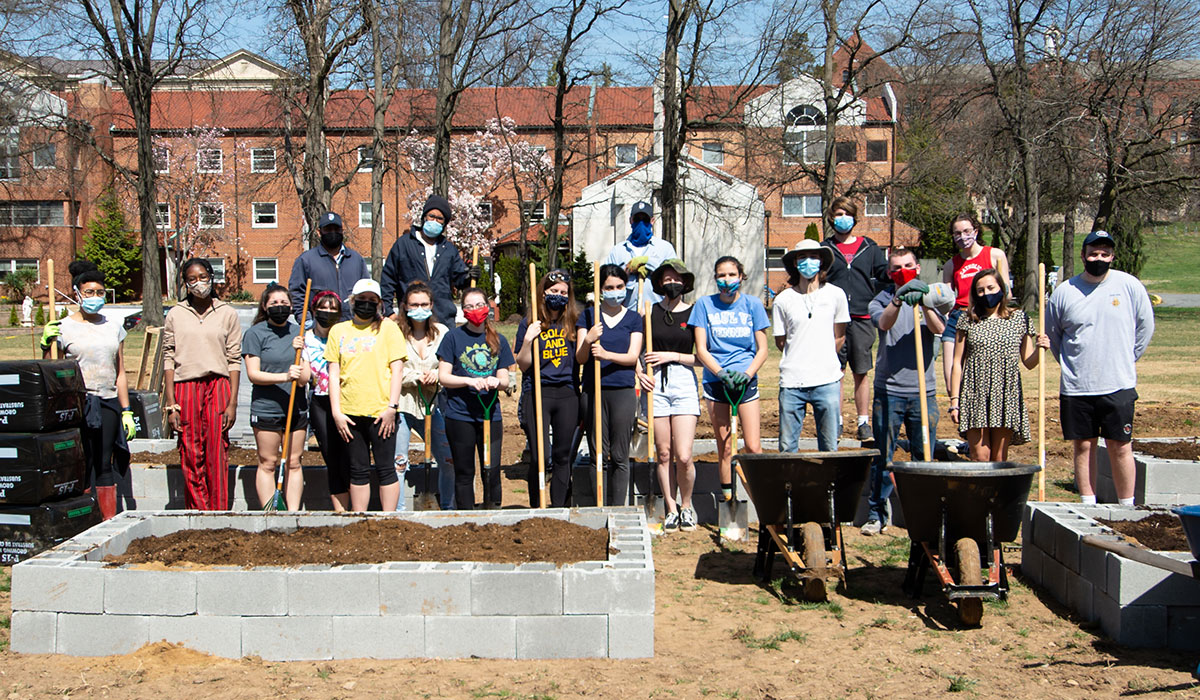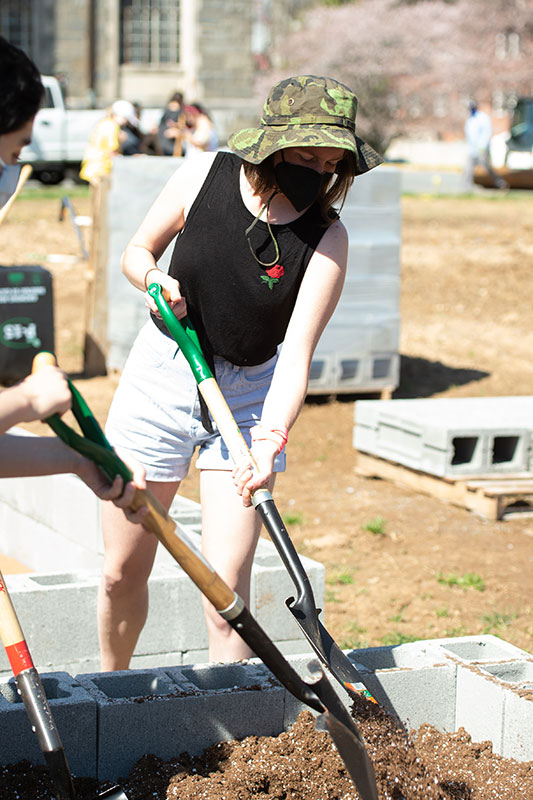

Photos by Sergio Arreaga, photo intern in the Office of Marketing and Communications
On Saturday, March 27, students from the Student Government Association (SGA) Environmental Initiative, Catholic University Environmental Club, and staff from Facilities Planning and Management (FPM) joined forces to break ground for a new community garden, located on the north side of Curley Hall.
This student-led effort established the garden to bolster the campus community’s connection to nature and each other. The garden will incorporate Franciscan garden values that discourage the use of pesticides and herbicides.
 The community garden will feature garden liaisons and plot ownership in order to ensure longevity of the effort. The students have developed a network of campus community members to maintain the garden throughout the growing season. Student clubs, academic classes, athletic teams, residence halls, or staff departments can sign up to “own” a raised bed plot to grow their own food.
The community garden will feature garden liaisons and plot ownership in order to ensure longevity of the effort. The students have developed a network of campus community members to maintain the garden throughout the growing season. Student clubs, academic classes, athletic teams, residence halls, or staff departments can sign up to “own” a raised bed plot to grow their own food.
“The new community garden is an expression of Pope Francis’s call for action in Laudato Sí to serve the community and the earth,” says Holly Thompson, initiative director and junior environmental studies major. “We are also introducing small scale composting and we are working closely with many different groups on and off campus to educate the CatholicU community about this initiative. Our goal is to have students and faculty become tuned in to nature and care for creation while learning how to garden.”
Spring and fall will be the peak growing times. In the summer and winter, the garden will return to a neat, dormant state. Garden liaisons, who are part of SGA’s Environmental Initiative, are the primary leaders of the garden and act as a resource for plot owners while ensuring the overall health, safety, growth, and maintenance of the garden. The liaisons created a standard operating procedures handbook. The liaisons report to Thompson, who is the main point of contact for FPM’s coordination with the garden.
Through a series of design discussions, including feedback from local subject-matter experts, the SGA Environmental Initiative and FPM initially planned for five raised beds to grow herbs and vegetables, two L-shaped plots for butterfly-attracting perennial and annual flowers, and a bench. If campus interest grows, fruit trees and additional raised-bed planters may be added, which will allow for the garden to grow from five plots to nine plots.
For quick assembly, the raised beds will be built with cinder blocks. The standard planter size is 4’x8’x16’. An eight-foot deer fence will line the perimeter. A garden shed, composting barrels, and a rainwater harvesting system are currently onsite.
The FPM grounds department is committed to assisting the students as needed through the spring and will keep the area in a presentable manner in the summer. Many participating students are volunteers at the nearby Franciscan Monastery’s community garden, and will bring their gardening knowledge to this new campus initiative. The monastery’s garden coordinator has offered to provide subject-matter assistance as time allows.